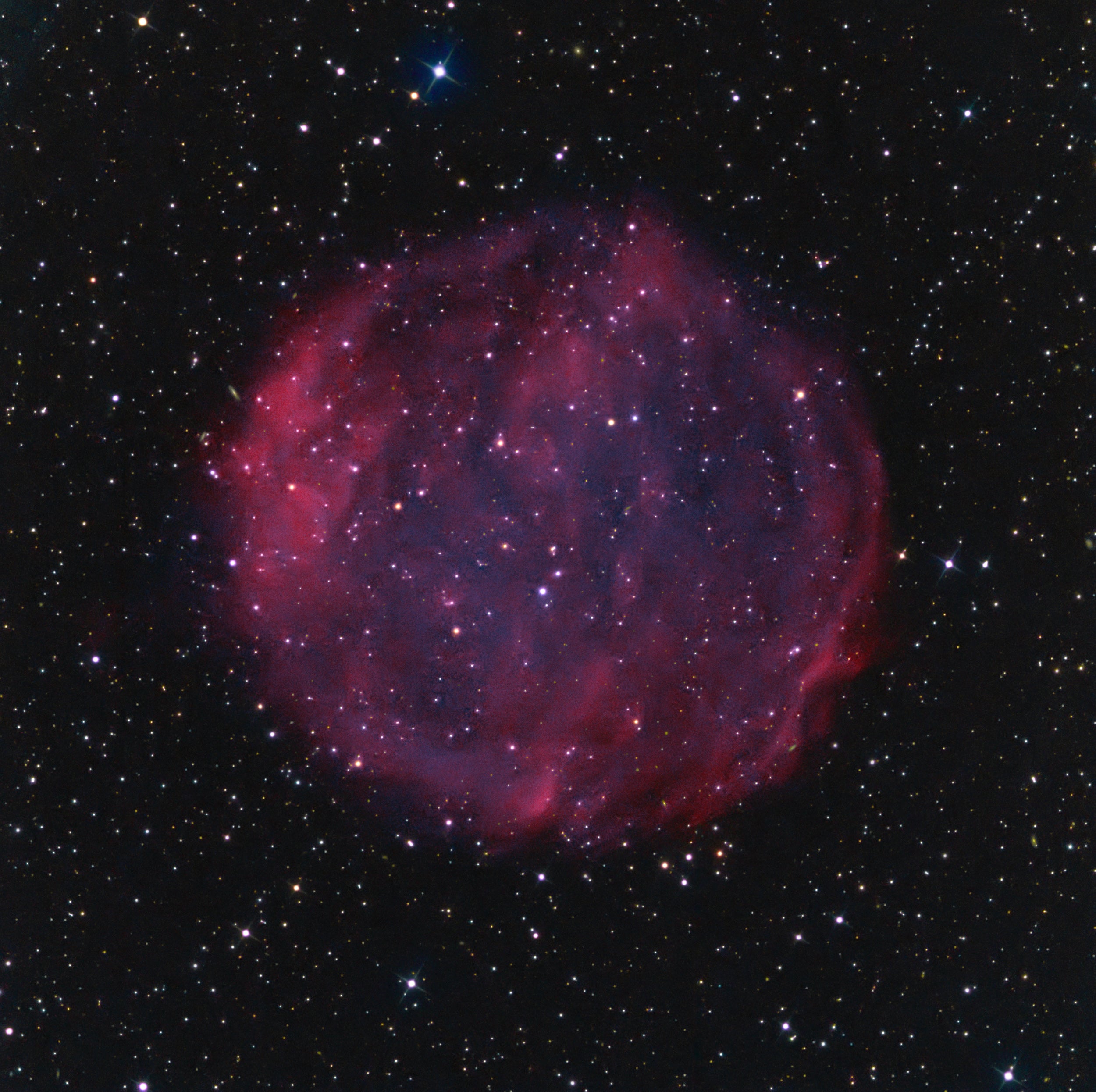
In May 1980, Austrian astronomers Alois Purgathofer and Ronald Weinberger discovered a large, faint planetary nebula while searching Palomar Observatory Sky Survey prints for possible flare stars. As their first co-discovery of a planetary, it was designated Purgathofer-Weinberger 1. This is usually abbreviated PuWe 1, but also carries the catalog designation PN G158.9+17.8.
This object lies at the far western edge of the constellation Lynx, near that star pattern’s borders with Camelopardalis and Auriga. With an apparent diameter of 20′, it is the second-largest planetary nebula visible from Earth, surpassed only by the Helix Nebula (NGC 7293) in Aquarius. As a demonstration of its size, it covers 41 percent as much area as the Full Moon.
Researchers have measured its brightness in two wavelengths, those of Hydrogen-alpha (Hα) and Oxygen-III (OIII). In Hα, the magnitude of PuWe 1 is 8.6; in OIII, it falls to 11.2. These magnitudes may seem relatively bright, but remember that they’re the total integrated magnitudes of a sphere two-thirds the apparent diameter of the Moon. The central star, a white dwarf, is also quite faint. The best estimates peg its visual magnitude at 15.5.
Although the nebula’s low surface brightness makes it nearly impossible to detect visually through amateur instruments, it’s not difficult to photograph. Excellent images of it have been obtained through telescopes with apertures as small as 5 inches.
PuWe 1 lies some 1,300 light-years away, making it one of the nearest of the approximately 1,500 planetary nebulae in the Milky Way. It has a true diameter of about 4 light-years. Astronomers think that while the cloud of gas will continue to expand, its outer edge has pretty much reached the limit at which the radiation from the central star can still excite the atoms and cause them to glow.









